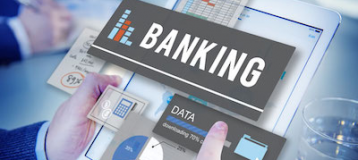
Since mid-March 2020, every part of our lives has changed – the way we choose, purchase and pay for products and services is very different, not to mention our business, education, social and travel arrangements. Daily habits that were once carried out without a second thought now require a shift in our mindsets and actions. Customers have adapted quickly to a new way of living during Covid-19 and contactless banking is part of this new normal. In fact, Forbes has reported that “Overall usage of contactless payments in the country has risen 150% since March 2019.”
The change in customer behaviour is likely to be long-term. Instead of going to the grocery store, many shop online. Rather than taking a leisurely lunch, they get a takeaway coffee from their favourite cafe. Family and friends are meeting up in parks. Businesses are operating remotely and some are preparing to reopen under very different circumstances. Well-earned vacations are now staycations. The banking industry has aligned with this new customer behaviour through contactless banking.
In his Mobiquity article, strategy director Peter-Jan van de Venn said: “While there is already a rapidly increasing demand for digital banking services due to the big tech impact, I’m convinced that the current situation will be an accelerator for the demand for digital or even better contactless banking services for the longer term. If you take into account how quickly the world adopted the switch to digital communication, there is a huge opportunity for banks to fit their customers needs by providing more contactless banking services.”
We’ve seen that companies like Walmart are expanding their services and embracing contactless services while Chase reports that “Statistics company Statista estimates that total digital payment transactions will reach nearly $4.8 million in 2020—a year-over-year increase of more than 15 percent.”
The changed mindsets and actions of customers are fast becoming habits and at the core of all of this is safe, convenient, touchless banking largely made possible through mobile technology.
At every turn during Covid-19 consumers have been prompted to pay for purchases through contactless transactions. They have become accustomed to an almost cashless society and their preferences have changed. Their safety and wellbeing is always at the top of their minds. They are conscious of protecting themselves and others while carrying out daily tasks and keeping their distance from everyone they encounter. Will they revert to their old banking habits as the economy reopens or will touchless banking continue to be part of the new normal?
McKinsey & Company are tracking consumer sentiment and note “Use of cash is decreasing and digital forms of payment are increasing, perhaps as people quarantine or avoid interactions more likely to transmit disease.”

Prior to Covid-19, in February 2020 USA online banking statistics showed that 80% of Americans would rather bank digitally than visit a brick-and-mortar branch. During the pandemic, many community banks and credit unions have had to close their branches. Yet, they continue to meet demand for their services, which increased during this time. Customers require even more banking assistance than usual with many needing to access PPP, economic stimulus checks, loan holidays etc. Their way of banking changed, yet touchless banking enabled them to avail of all of the usual services and more. The capacity of financial institutions has been challenged with reduced operational capacity across the board but with rising demands from their customers, and digital banking by and large stepped up to the plate.
Customers adapted to a new form of banking and still benefited from essential services, many from the comfort and safety of their own homes. As the economy reopens, many customers and businesses are operating under time constraints. The efficiency that comes with touchless banking will be even more attractive to them as they can avail of banking services while on the move. We live in a society where safety is needed and convenience is desired in all aspects of our lives. Financial institutions are catering for safe convenience through touchless banking and it is likely to form a large part of banking into the future.
Learn more
For more insights, connect with Sarah Martin, CEO at Pulsate, on LinkedIn here.






HAVE YOUR SAY. LEAVE A COMMENT